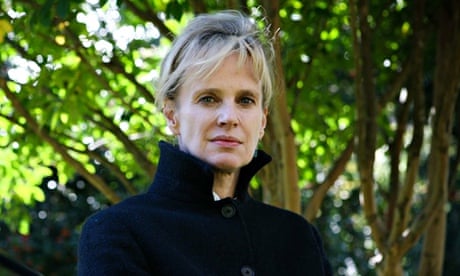"All intellectual and artistic endeavours," writes the female painter-protagonist of Siri Hustvedt's new novel, "even jokes, ironies, and parodies, fare better in the mind of the crowd when the crowd knows that somewhere behind the great work or the great spoof it can locate a cock and a pair of balls." The absence of women artists in the history of painting is an old feminist topic, but it is one The Blazing World approaches head-on. The novel concerns an embittered painter living in New York at the close of the 20th century, whose belief that she has been the lifelong victim of cultural misogyny becomes so intolerable that she decides to take action by persuading three of her male contemporaries to show her work under their own names.
In the eyes of the New York art world, Harriet Burden – Harry to her intimates – is at best a minor figure; at worst, the little recognition she attracts can be ascribed to the influence of her husband, a powerful art dealer who could have made her career had she not married him. As it stands the critical establishment knows Harriet as the hostess of her husband's dinner parties and the mother of his two children, and grudgingly at that, for she is a woman surprisingly – considering his famously exquisite tastes – lacking in physical and social graces. "She made a scene once at a dinner," one of her guests remarks. "She was talking to Rodney Farrell, the critic ... anyway, something he said must have set her off, and this woman, who we all thought of as very quiet, burst out and rattled on about philosophy, art, language. She was very loud, lecturing, unpleasant ... Felix was upset. He hated scenes."
That cruel and condescending world is not, of course, set to rights by the revelation that three of the most explosive and innovative shows to have swept the New York art scene in recent years were in fact the work of this privileged and disgruntled middle-aged mother: those whose opinions matter deny the claim, and the indefatigability of denial – in all its many forms – is The Blazing World's true subject.
Hustvedt has constructed the novel as a kind of artefact, out of numerous kinds of testimony: it purports to be the work of an academic researching Harriet Burden's claims of authorship years after her death, and is a collection of interviews, essays, articles and letters demonstrating the spectrum of responses to the would-be scandal. Harriet chose her male foils carefully, to represent different aspects of the gratuitousness of male artistic fame: first a young, photogenic wunderkind named Anton Tish; then the "nearsighted, mulatto, queer" mask of Phineas Eldridge; and lastly the iconic persona of an artist named simply Rune, who is its macho essence.
Tish, an ignorant pretty boy, is given a show entitled The History of Western Art, which is "a complex joke about art, full of references, quotations, puns and anagrams", and even though he is unable in interviews to comment on or even understand his own supposed creation, the work is an instant success. Phineas, the only one of the three to have compassion for Harriet ("I told her she should think twice about taking on a swishy black man, but Harry was undeterred by my status as a member of not one but two minorities"), as well as the only one to admit publicly her authorship of the work, is also the artist whose disguise brings her the least success.
But it is the narcissistic Rune who is Harriet's undoing. "My whole body churns as I gorge on the reviews and notices and commentaries about the brilliant Rune's coup," Harriet writes after their show opens to cultural near- hysteria. "Their heads are turned. The man who has written the review in The Gothamite does not know he has written about me, not Rune. He doesn't know that the adjectives muscular, rigorous, cerebral can be claimed by me, not Rune. He doesn't know he is a tool of my vengeance."
Rune, however, has no intention of facilitating female vengeance; Harriet discovers that male power has its basis in absolute selfishness, and that in fact it is he who has used her. "Harriet Burden has been really great to me," Rune says in an interview, "not only as a collector of my work but as a true supporter. And I think of her as a muse for the project ... What I can't understand is that she seems to claim she is responsible for my work. She seems to believe that she actually created it. I simply can't understand why she would say that. You know, she's been in psychiatric treatment for years. Let's just say she's a kind lady, but a little confused from time to time."
Among the "documents" that make up the text are Harriet's own diaries, which supply a more conventional narrative stream through which the story can essentially be told; but while they undoubtedly make The Blazing World more accessible, to an extent they blunt the novel's edge by confusing a visual politics with a verbal one. The authority of woman in language – her ability both to articulate herself and to make herself intelligible – is worlds away from her dispossession in art, the radicalism of her gaze, her struggle with the complicity of her own image as painterly subject and muse. Hustvedt has a lot of very entertaining satirical fun in The Blazing World, but that particular note of tragedy, though she tries to sound it, remains lost.

Comments (…)
Sign in or create your Guardian account to join the discussion